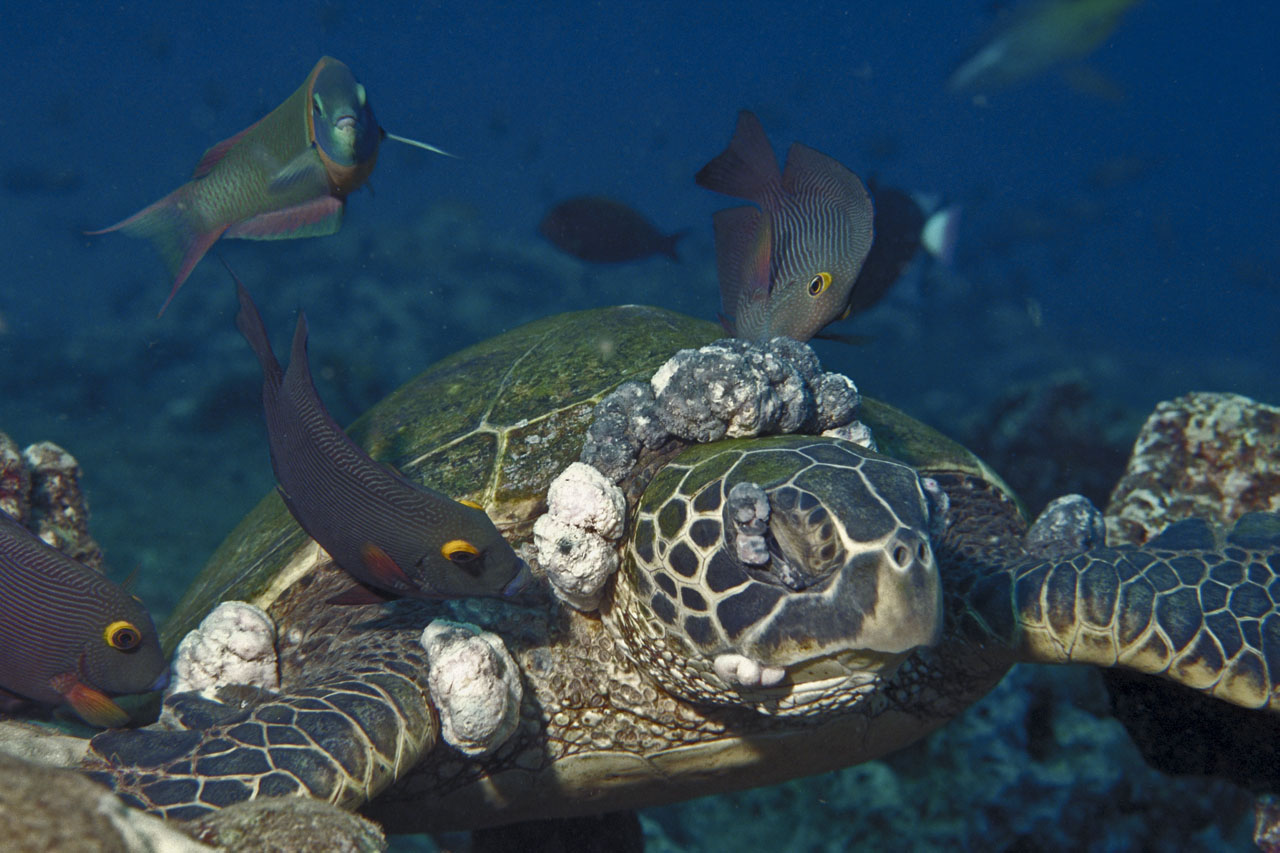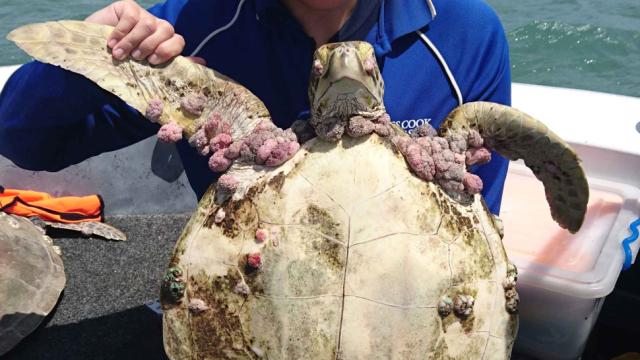Australian scientists in the midst of investigating a herpes outbreak among green sea turtles at the Great Barrier Reef say the blight — which causes abnormal growths on the skin, mouth, eyes and internal organs — is likely due to pollution.
A green sea turtle stricken with fibropapillomatosis (Image: Karina Jones/James Cook University)
For the past three years, Karina Jones from James Cook University in Townsville, Australia, has been investigating fibropapillomatosis (FP) among green sea turtles in the Great Barrier Reef. This condition, triggered by a turtle-specific herpes virus, causes disfiguring tumours around the eyes armpits, genitals, neck and flippers. The tumours are benign, but they can often lead to death, as the growths can obstruct a turtle’s vision and prevent them from finding food or avoiding predators and boats. It also makes them more vulnerable to further infections.

A Hawaiian green turtle severely afflicted with fibropapillomatosis (Image: Peter Bennett & Ursula Keuper-Bennett)
Scientists aren’t sure how or why sea turtles get the disease, or why it’s starting to spread like wildfire. Indeed, other parts of the world are recording similar outbreaks, including Florida and Hawaii. Forty years ago, FP was seen in about 28 to 67 per cent of sea turtles. Today, it’s as high as 92 per cent in certain regions, and it’s most prominent in warmer climates.
As New Scientist now reports, an unpublished survey by Jones’ team shows that rates of the herpes virus are most pronounced along a specific stretch of water at Magnetic Island, which happens to be a popular tourist attraction at the reef. The team’s research shows that about half of the turtles in these waters have FP, compared to 10 per cent elsewhere around Cockle Bay.
This new research bolsters the suggestion that a connection exists between FP and human activity. Previous research has shown a strong correlation between near-shore habitats and the disease.
Importantly, this virus exists around the world, and many turtles carry the virus — but it’s often dormant. “We think there must be some external trigger that causes the tumour development,” noted Jones in New Scientist. That “external trigger” is likely pollution, but these researchers aren’t sure which contaminants are responsible. Looking ahead, her team plans to evaluate historical water quality data and test water samples for chemicals like heavy metals, pesticides and fertiliser. The researchers will also collect blood samples and swabs from turtles to find out what’s going on at a physiological level.
It’s a daunting task, but this work is hugely important. Green sea turtles are classified as an endangered species, currently threatened by overharvesting of their eggs, hunting of adults, fishing gear and a loss of nesting beach sites. They don’t need another enemy.
